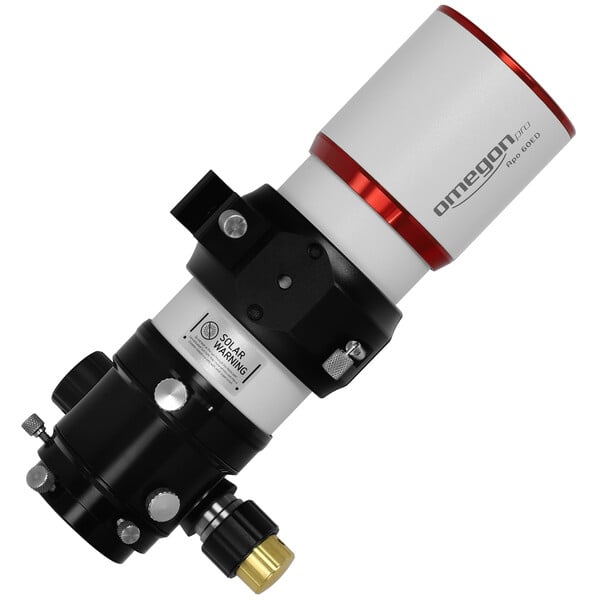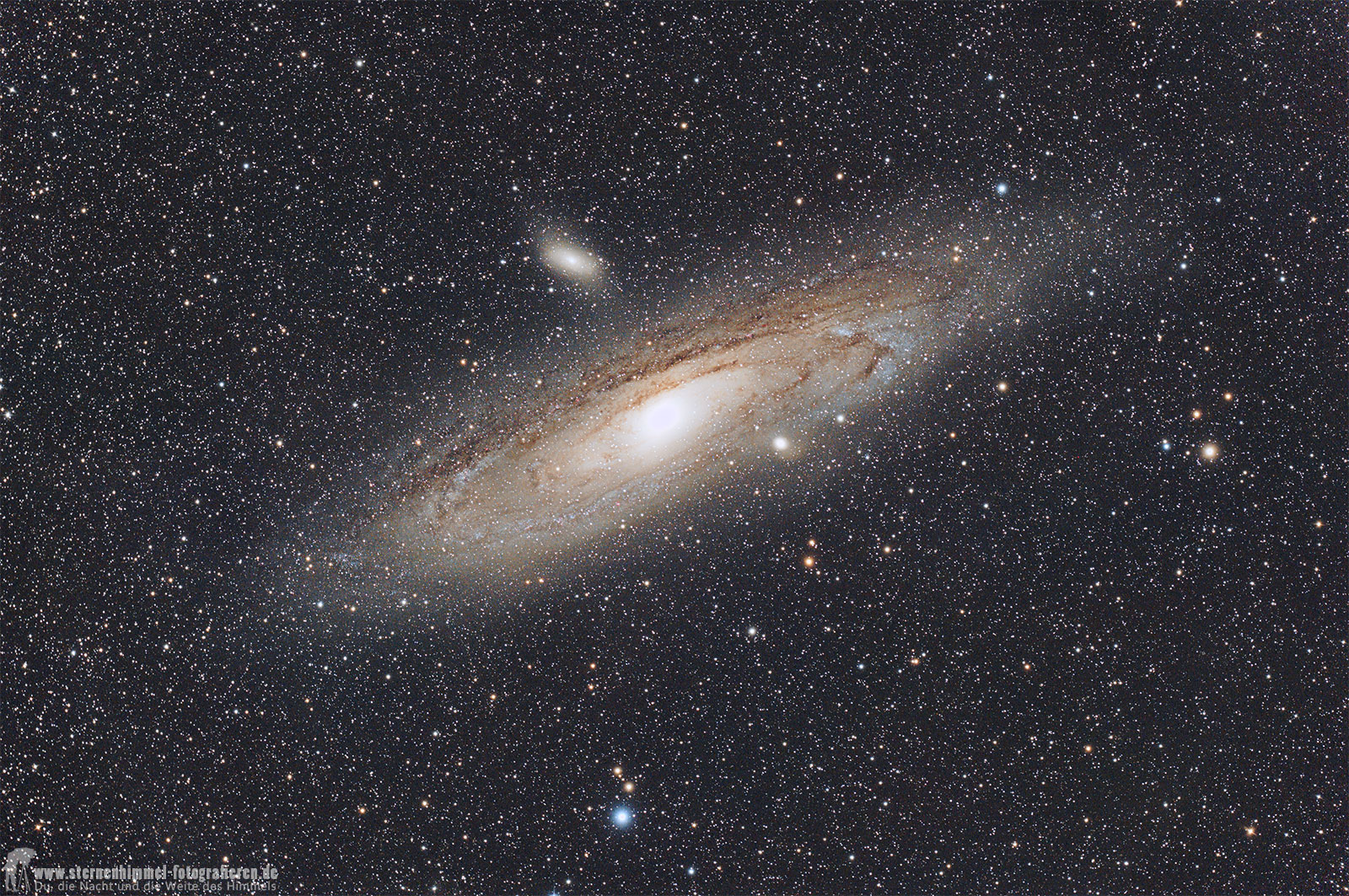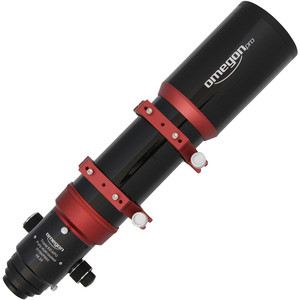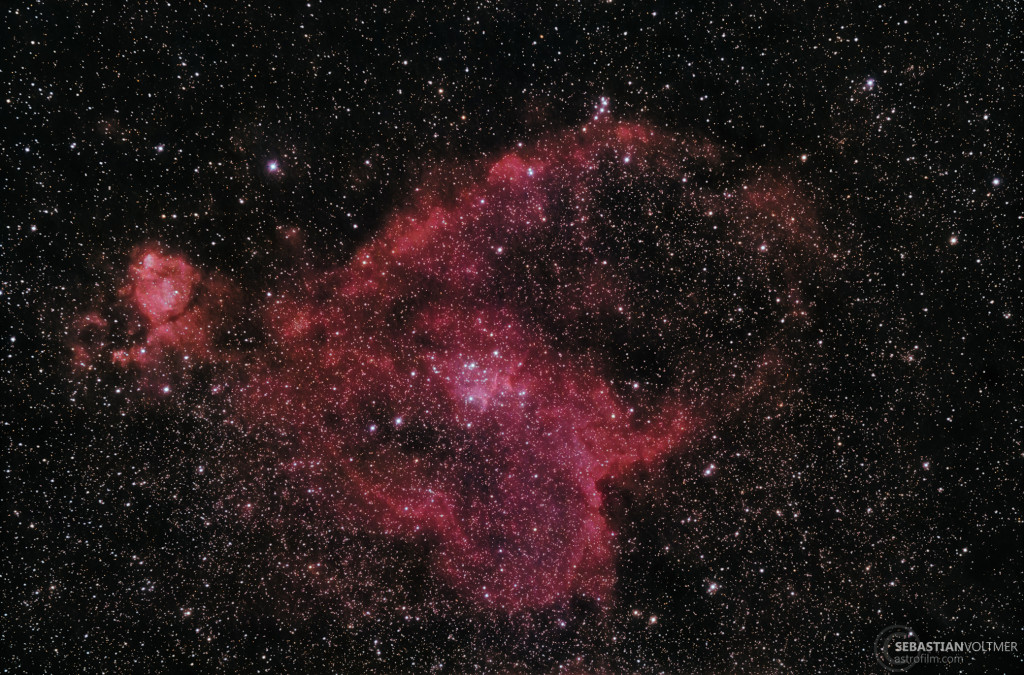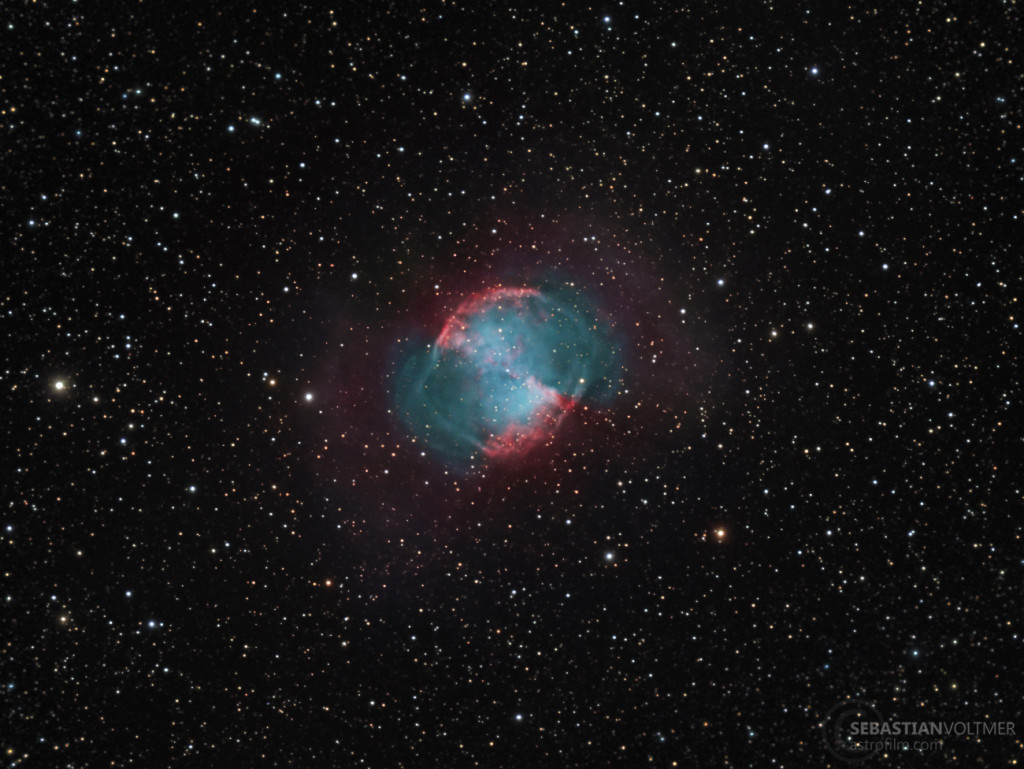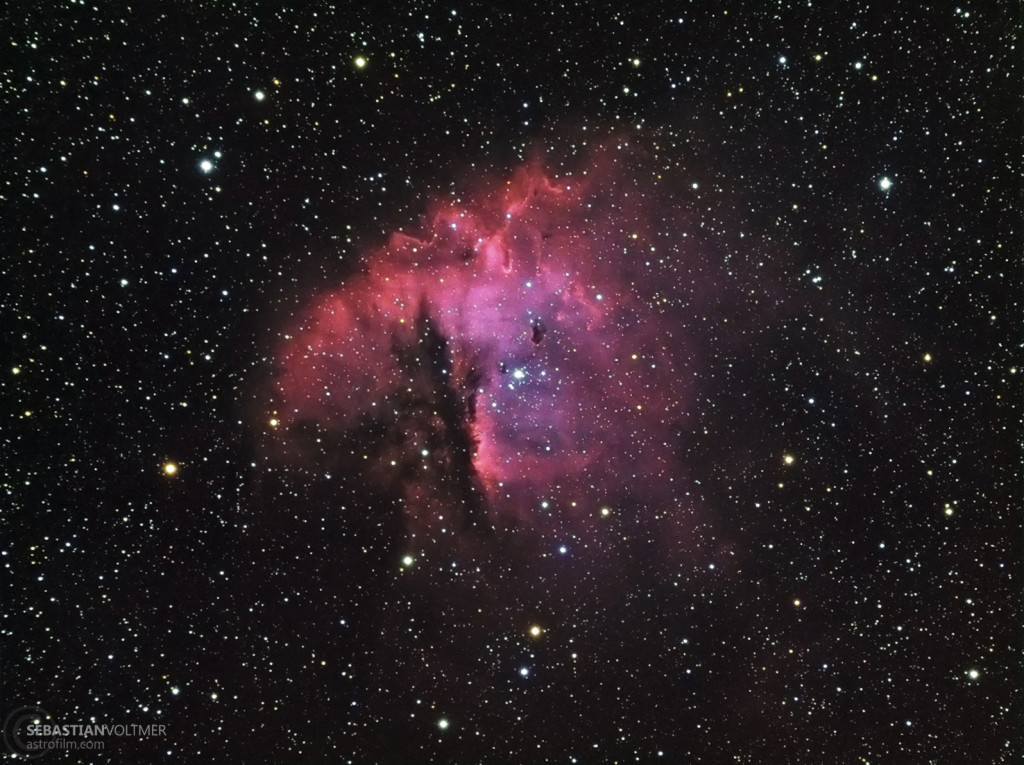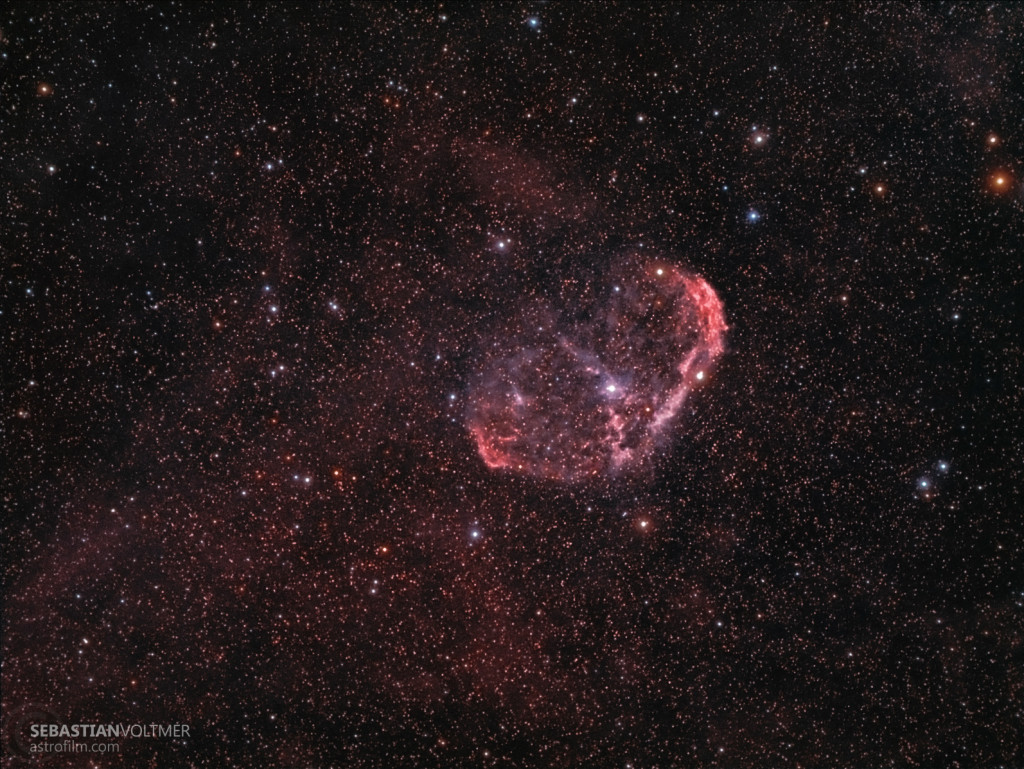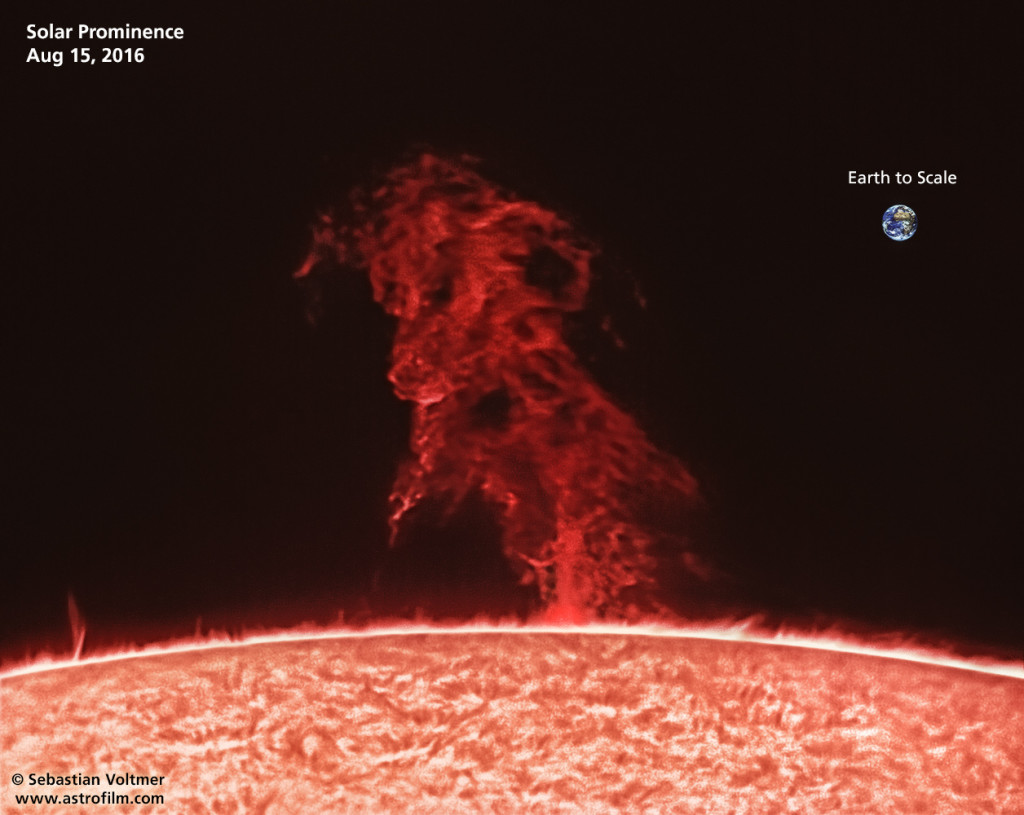These photos almost look like you were there. As if Captain Kirk was giving me a personal tour of the Pleiades on his command bridge screen on the Enterprise. However, what you see in the pictures below are images taken with the new Omegon PRO apochromats. And we swear, they were all taken from Earth 😉
So on to more beautiful photos.
Omegon’s new doublet, triplet and quadruplet refractors are a real compact Starfleet for astrophotographers who value brilliant and needle-sharp photos of the universe. The lens apertures range from 65mm to 107mm. There’s the right telescope for everybody.
Features include: Ohara FPL-53 glass for a true-colour image, CNC tube, hybrid rack and pinion focuser with, ball bearings and 360° rotation, tube clamps, dovetail bar, viewfinder shoe and Vixen-style dovetail bar.
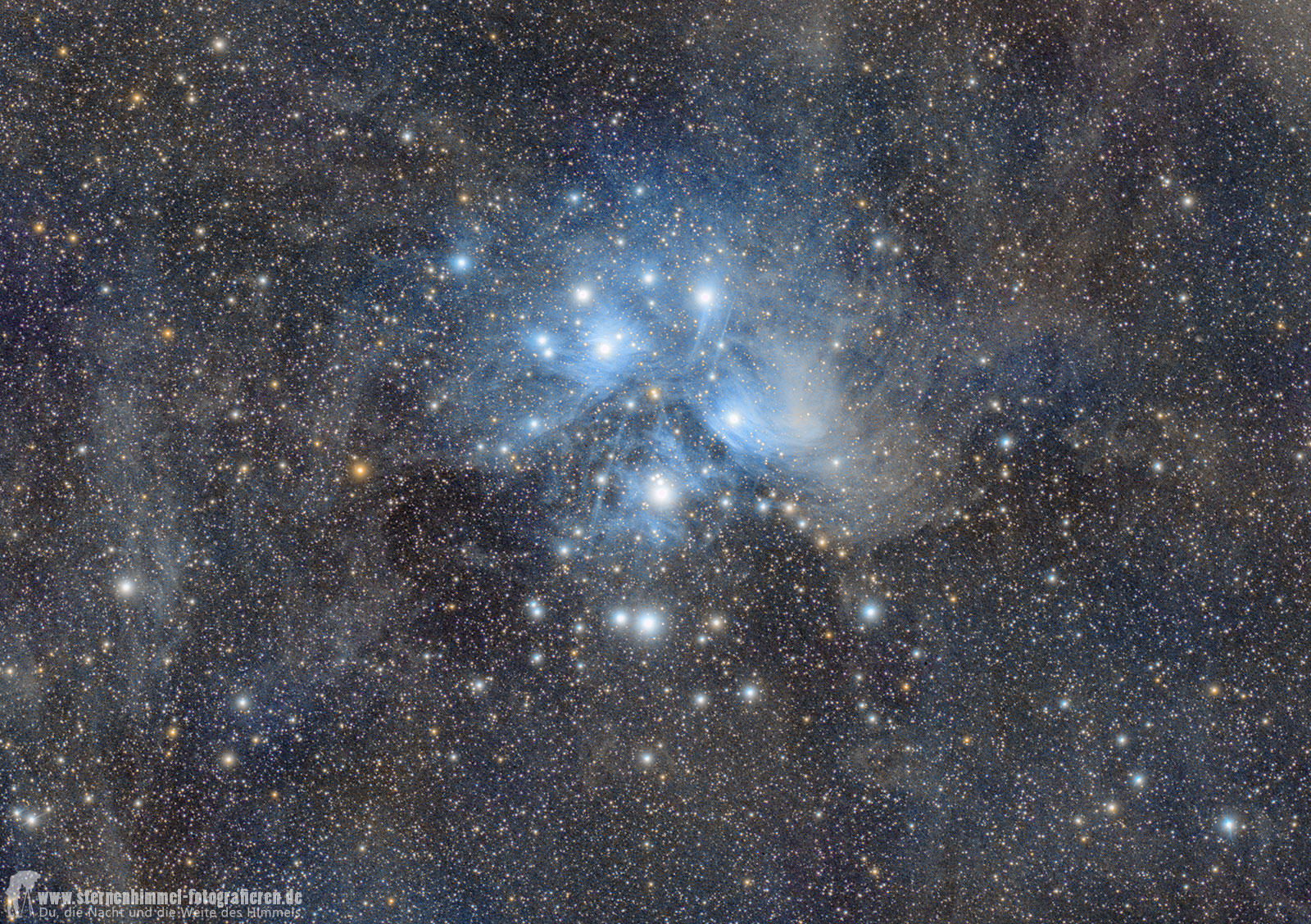
The Pleiades with reflection nebula, APO 71/450 Quadruplet, Canon 6Da, 32×180 seconds, Image: Philipp Keltenich
And here is the fleet of telescopes at a glance:
- Apo 60/330 Doublet OTA #60852
A small doublet apochromat for travel and for striking panoramic pictures. - Apo 71/450 Quadruplet OTA #60855
For fantastically beautiful, true-colour and flat images right up to the edges of the field of view. Here you don’t have to worry about how to attach a field flattener to your camera, because it’s already built-in. A great flat field apochromat! - Apo 72/400 Doublet OTA #60853
If you like to travel and love shooting large-area objects, you will love this refractor. A clear picture and only 400mm focal length, it captures the Andromeda Galaxy and similar objects. - Apo 80/500 Triplet OTA #60856
An apochromat with a clear and true-colour image, even at very high magnifications. The expertly-crafted 2.5″ focuser is larger than that of most 80mm telescopes. The advantage: so much illumination that even your full-frame camera will have fun with it. By the way, we also stock the carbon version of these apochromats: chic, thermally-stable and even lighter. - Apo 90/600 Triplet OTA #60858
Weighing just 5 kilograms but with a 90mm aperture: this apo refractor is suitable for your mount at home or for travelling under a dark sky. The 2.5″ focuser holds your camera in a stable position all night long. - Apo 107/700 Triplet OTA #60859
Sophisticated three-lens design with Ohara glass for a clear and true-colour image. A 3″ focuser offers you a generously illuminated field of view and an enormous load-bearing capacity – a great advantage for heavy cameras.
Get to know the new Omegon apo fleet better, just click on the links and learn more on our product pages.

